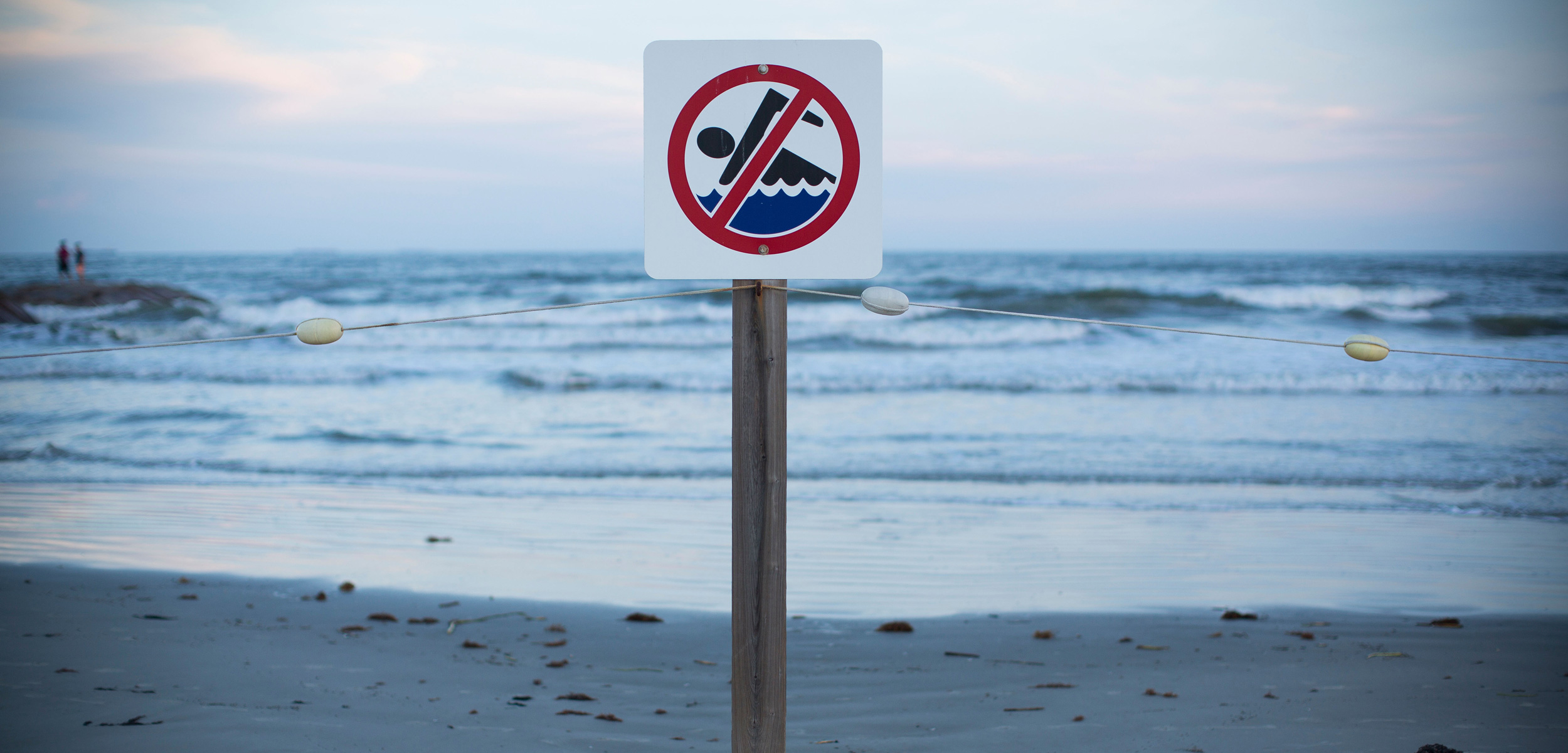Eau de Toilette
Coastal cities struggle with poopy shorelines, mostly from their own citizens.
Article body copy
Coastal cities in wealthy nations have invested millions in an attempt to keep their crap away from urban beaches. But a new study shows that water quality continues to suffer from a problem of our own making.
In Mobile Bay, Alabama, researchers have discovered a high concentration of fecal bacteria. And despite the fact that there are many cattle ranches close by, the researchers found that the offending feces are not from cattle—they’re mostly of human origin. This adds Mobile Bay to a growing list of coastal waters that are suffering the same problem.
“This is a beach people use to swim,” says Yucheng Feng, an environmental scientist at Alabama’s Auburn University and one of the researchers behind the new report. She adds that people can get sick—from hepatitis to ear infections or worse—from swimming in waters with high levels of poop.
From January to April of 2012, the researchers took samples of the water from the eastern shore of Mobile Bay near the small city of Fairhope, including from a popular beach. They were expecting the 101 samples to reveal that nearby cattle ranching was the problem. But when they analyzed the water for the presence of enterococci bacteria, which are often found in the feces of mammals and birds, they were surprised by the results.
An in-depth DNA analysis of the bacteria revealed that close to half of the samples had human markers. Only two samples contained markers for cattle.
Feng’s team further found that many of the water samples exceeded the threshold for enterococci contamination set by the US Environmental Protection Agency (EPA). What’s more, the high level of human fecal bacteria makes this more of a problem than if the bacteria had come from cattle, Feng says. “Generally speaking, we humans catch diseases from other humans.”
Feng and her colleagues also found that water gets crappier after storms—a sign that the problem is caused by overflowing sewers. Upgrading aging sewer lines, Feng says, could help solve the issue.
Some of the contamination could also be caused by old bacteria that essentially come back to life when wet.
“Because of the nature of these organisms, they can survive in beach sand,” Feng says. “So when there’s a storm, the sand gets stirred up and somebody’s bacteria can be resuspended in the water column.”
Mara Dias, a water quality manager for the Surfrider Foundation, says that efforts to reduce storm water runoff, such as using ocean-friendly gardens, which are built to retain more storm water and the pollutants it stirs up, could further help with pollution problems.
Mobile Bay joins a robust list of city shorelines dealing with human waste. A spokesperson from the EPA says that in 2016, most of the 6,000 US beaches that are monitored for bacterial contamination were open and without advisories 94 percent of the time. But of those beaches, 1,425 were closed or had advisories at least once that year.
Dias says that further studies examining the factors that other animals play in fecal content would give a better picture of the problem—Canada geese are known culprits when it comes to inland waterways. But in Mobile Bay, cow pies seem to stay put on the range.

